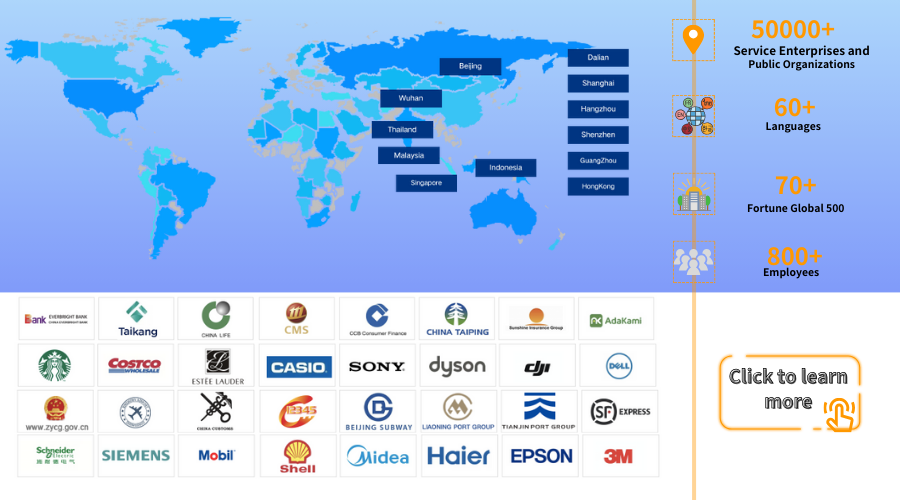Outbound Voice Bots: The New Driver for After-Sales Remarketing
Article Summary:With rapid advancements in artificial intelligence, particularly in natural language processing (NLP) and machine learning, outbound voice bots have emerged, revolutionizing the after-sales sector. This article aims to delve into the application of outbound voice bots in after-sales remarketing, analyzing their advantages, challenges, and future trends.
Table of contents for this article
- Definition and Working Principle of Outbound Voice Bots
- Core Advantages of Outbound Voice Bots
- Practical Cases of Outbound Voice Bots in Post-Sales Remarketing
- Challenges and Strategies
- Outbound Voice Bots: Empowering Post-Sales Remarketing
- 》》Click to start your free trial of voice chatbot, and experience the advantages firsthand.
After-sales service is a critical link for establishing long-term trust between businesses and consumers. Traditionally reliant on manual customer service teams for inquiries, product guidance, and satisfaction surveys, this process is not only time-consuming and resource-intensive but also inefficient, struggling to meet customer demands at scale. With rapid advancements in artificial intelligence, particularly in natural language processing (NLP) and machine learning, outbound voice bots have emerged, revolutionizing the after-sales sector. This article aims to delve into the application of outbound voice bots in after-sales remarketing, analyzing their advantages, challenges, and future trends.
Definition and Working Principle of Outbound Voice Bots

An outbound voice bot is an intelligent system based on artificial intelligence technology that can automatically make phone calls to users and complete specific tasks through pre-set voice interaction processes. It integrates advanced technologies such as speech recognition, speech synthesis, natural language understanding, and response generation, allowing it to simulate human conversation and achieve natural communication with customers.
Compared to traditional human customer service, outbound voice bots offer several distinct advantages: they can operate 24/7 without fatigue and provide rapid responses, significantly improving customer service efficiency and customer satisfaction.
In the realm of after-sales service, outbound voice bots are widely used in various scenarios, such as collecting customer feedback, resolving issues, sending maintenance reminders, and recommending upgrades. Their benefits extend beyond merely saving labor costs; more importantly, their data analysis capabilities enable businesses to better understand customer needs, thereby facilitating precise marketing.
The working principle of outbound voice bots mainly includes the following steps:
- Data Preparation: Based on business requirements, prepare outbound call lists, script dialogues, product information, and other relevant data.
- Automatic Dialing: The bot automatically dials customer phone numbers according to preset dialing strategies.
- Voice Interaction: Using Automatic Speech Recognition (ASR) technology, the bot receives customer voice input and employs Natural Language Processing (NLP) to understand customer intent. It then generates appropriate voice responses.
- Data Analysis: The system collects voice data from outbound calls and utilizes machine learning algorithms to analyze this data. This process continuously optimizes outbound strategies and script dialogues.
Core Advantages of Outbound Voice Bots

- Efficient Automation: Bots can operate 24/7, handling a large volume of outbound tasks, significantly improving efficiency and reducing the workload on human customer service agents.
- Cost Optimization: Compared to human customer service, bots have lower operational costs. Over time, this can substantially reduce a company's service expenses.
- Data-Driven Insights: The data collected during interactions can help businesses conduct in-depth analyses, optimize service strategies, and achieve targeted marketing.
- Personalized Experience: Based on user data, bots can provide personalized service recommendations, enhancing the user experience and increasing brand loyalty.
Practical Cases of Outbound Voice Bots in Post-Sales Remarketing

01 Customer Satisfaction Surveys
After a product has been in use for a certain period, the bot can automatically call customers to conduct satisfaction surveys. By asking flexible and varied questions, it collects customer feedback, promptly identifies shortcomings in services or products, and provides a basis for improvements. Additionally, this is an excellent opportunity to understand new customer needs and explore remarketing opportunities.
02 Product Renewal or Upgrade Reminders
For subscription services or products that require periodic updates, the bot can notify customers in advance about renewal or upgrade information, reducing customer churn due to forgetfulness. By providing customized recommendations, it increases renewal rates and upgrade conversions.
03 Product Promotion
A financial institution utilized outbound voice bots for promoting loan products. After obtaining a list of potential customers, the bots proactively contacted them to introduce the features and benefits of the loan products, inviting them for consultations and applications. Through this method, the institution successfully attracted a large number of potential customers to inquire about and apply for loans, achieving rapid business expansion.
Challenges and Strategies
The application of outbound voice bots also faces challenges such as customer acceptance, privacy protection, and technological maturity. To address these issues, enterprises should implement the following strategies:
Optimize Interaction Design: Ensure that the bot's voice is natural and conversations flow smoothly to enhance user experience.
Enhance Privacy Protection: Strictly adhere to data protection regulations, clearly inform users of the purpose of information collection, and safeguard user privacy.
Continuous Technological Iteration: Invest in AI technology research and development to enhance the bot's intelligence level, enabling it to more accurately understand and respond to customer needs.
Human-Machine Collaboration Model: For complex or sensitive issues, timely transfer to human customer service to ensure proper resolution of problems.
Outbound Voice Bots: Empowering Post-Sales Remarketing
Outbound voice bots, as a new force in post-sales remarketing, have yet to fully unleash their potential. With continuous technological advancements and expanding application scenarios, they are increasingly integrating into enterprises' customer service and marketing systems, becoming a crucial driver for digital transformation and enhancing customer value.
Udesk's outbound voice bot is a smart tool tailored for modern enterprises' customer service and marketing needs. It integrates cutting-edge AI technologies, including advanced speech recognition and natural language processing capabilities. Designed to automate outbound calling services, it aims to optimize customer interaction experiences and improve business efficiency. Today, Udesk's outbound voice bot is leading the way in post-sales remarketing, ushering enterprises into a new era of more efficient and personalized customer service.
》》Click to start your free trial of voice chatbot, and experience the advantages firsthand.
The article is original by Udesk, and when reprinted, the source must be indicated:https://www.udeskglobal.com/blog/outbound-voice-bots-the-new-driver-for-after-sales-remarketing.html
Outbound Voice BotOutbound Voicebot for After-Sales RemarkingVoice Cahtbot

 Customer Service& Support Blog
Customer Service& Support Blog



